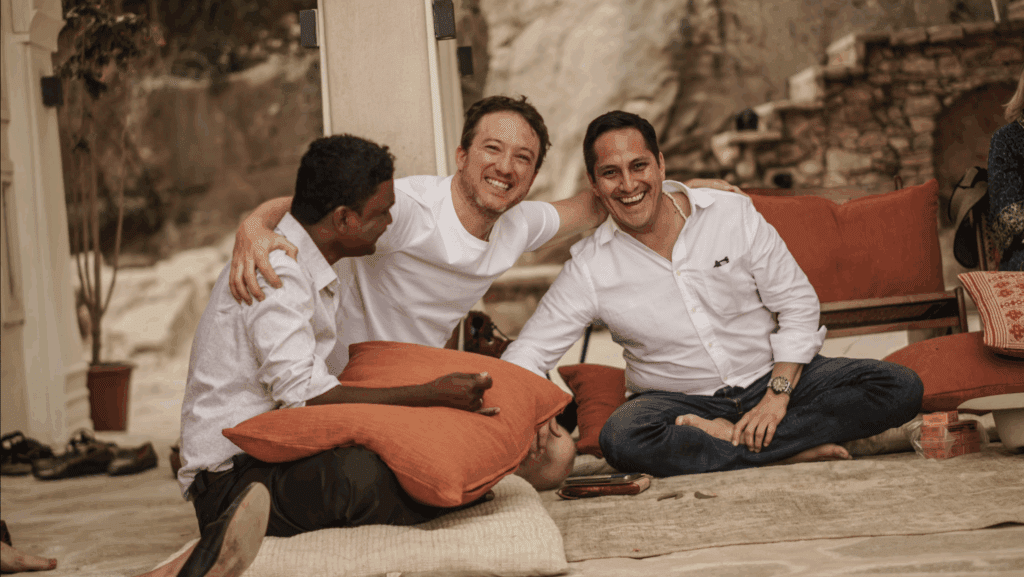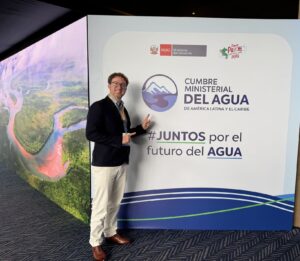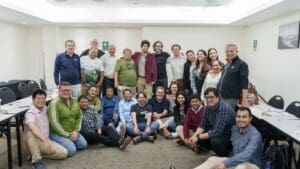From the Andes to Himalayas
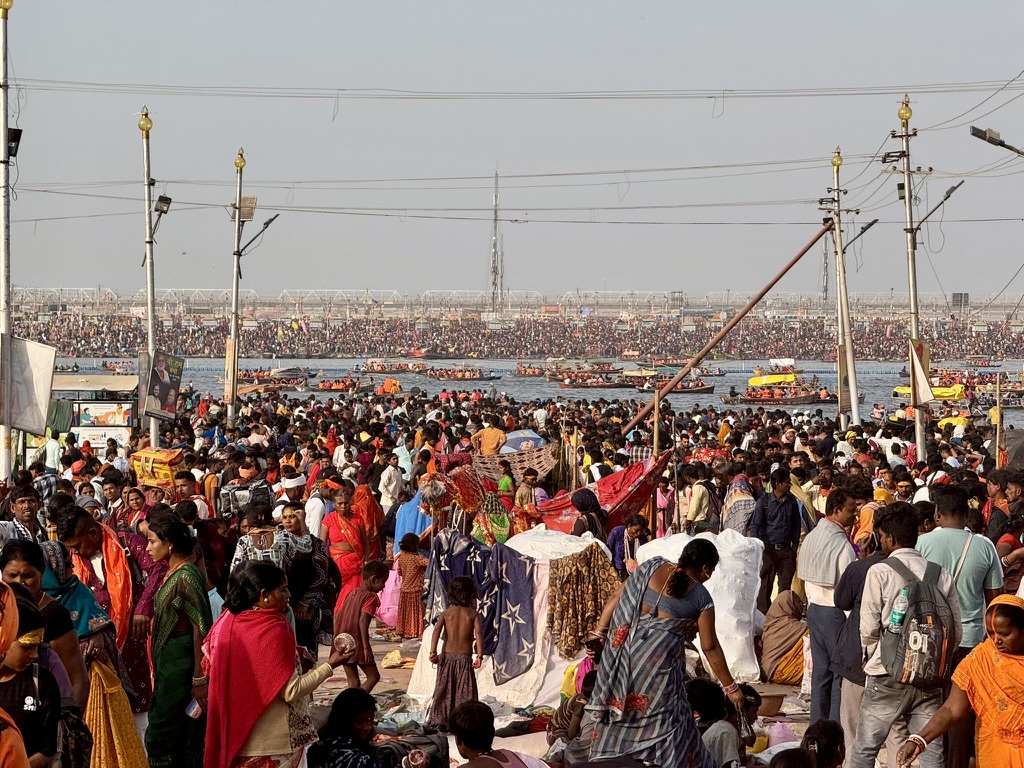
Weaving Wisdom into the Future of Restoration
By Florent Kaiser, CEO of Global Forest Generation
There are moments when life places you inside something so vast, so ancient, that you become a witness more than a participant.
In February, I stood at the banks of the Ganges during the Kumbh Mela—believed to be the largest gathering ever in the history of humankind, unfolding once every 144 years, governed by ancient planetary alignments. More than 700 million people participated in this extraordinary pilgrimage over the course of one month. On the day I attended alone, I was surrounded by over 60 million people gathering to bathe in the sacred confluence of rivers, to pray, to chant, to offer, to surrender.
Here were millions of people, moved by something far older and deeper than any institution or any market mechanism. They were responding to an ancient call to reconnect with their spirituality through nature and tradition.
Standing amidst that ocean of faith, I was reminded of why we restore ecosystems. At the deepest level, restoration is about our connection to the living world. It is not just ecological. It is cultural, spiritual, and deeply relational. Without those elements, any technical solution remains incomplete.
This transformative moment on the Ganges was part of a 12-day immersive journey through India to explore what it would mean for Global Forest Generation (GFG) to expand our restoration vision into the Himalayan region. It has taken me some time to fully reflect on the experience. What I found was not just a potential geography for future work, but a powerful convergence of ancestral wisdom and modern innovation that could help shape the next evolution of our work.
Discovering India Through the Eyes of Our Hosts
First and foremost, my purpose in India was to listen—to ideas, landscapes, and people. I met visionaries leading national restoration strategies, community organizers empowering women in rural villages, Indigenous leaders shaping laws to recognize rivers as legal persons, and spiritual teachers reminding us of our shared humanity.
The experience was masterfully shaped by the team of Earth One, a global alliance of bold leaders reimagining stewardship across cultures and continents. Bear and Carson, its founders, together with Cassia, Samuel, Sebastian, and Maximilian, wove together a journey that was rich with intellectual and cultural depth. Yet the experience was also grounded in real conversations—and shared meals.
At the heart of this journey was the generosity and vision of our hosts, Manvendra Singh Shekhawat and Agam Khare. Manvendra is a cultural visionary who is restoring ancient palaces and landscapes through his extraordinary hospitality business and residential and restoration project Dhun initiative—blending heritage, ecology, sustainability and community. Agam, founder of Absolute and an advisor to India’s government on conservation and water security, is scaling regenerative agriculture by combining bioscience, AI, and traditional farming practices.
Through them, we were invited to go beyond simply visiting India and participate in a living story of restoration.
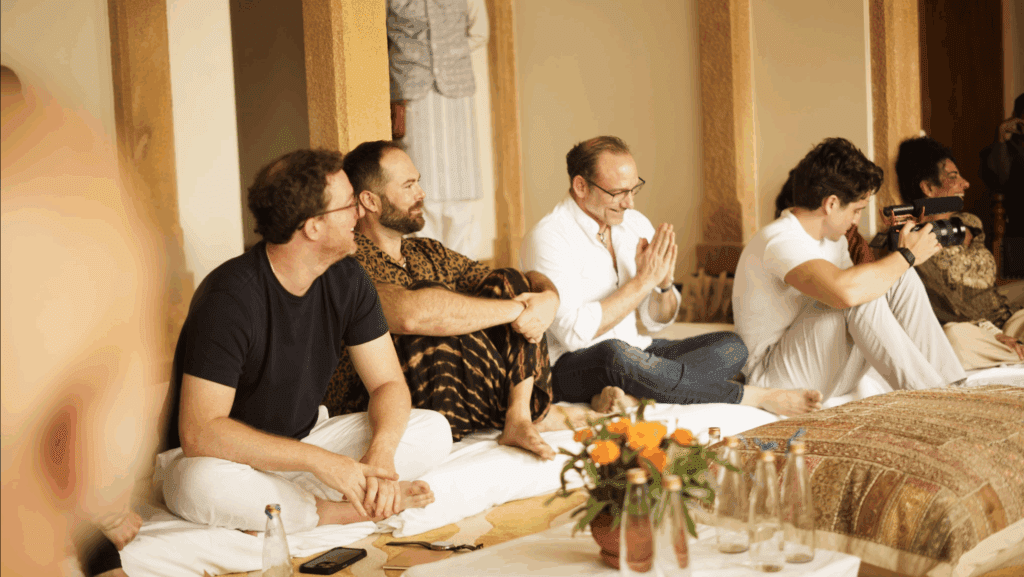
Stepping into the Unknown: An Inner and Outer Journey
Throughout these 12 days, I was particularly moved by those working at the grassroots level. Nafisa Barot and Selvakumar Vellingiri from the Utthan Trust are empowering marginalized communities and women in Gujarat. Jan Hania from the Tauhara Collective in New Zealand is advancing legal rights for rivers and landscapes to protect and restore them. And Swami Chidananda, a former investment banker turned spiritual teacher, reminded me daily that timeless wisdom begins with fundamental humility.
These encounters confirmed a truth I’ve long felt and brought into my work with GFG: to restore nature, we must radically restore our relationship to the natural world. In the Andes, we’ve seen how ancestral principles of the Quechuan people like Ayni (reciprocity) and Minka (collective communal service) drive large-scale ecological restoration. Without honoring these principles, we could not have scaled already to working with hundreds of Indigenous and local communities representing 40,000 people today, and we would certainly not be able to unite the millions of people needed to restore the entire Andes.
Across the world, thousands of cultures hold comparable ancestral principles—ways of being that have harmonized humanity with nature for generations. And today, billions of people are yearning to reconnect—with themselves, with one another, and with the Earth. This convergence of cultural revival and ecological necessity is at the heart of Global Forest Generation’s vision and my personal manifesto: to reignite our intrinsic role as stewards of life, and to scale this approach to some of the planet’s most endangered and sacred ecosystems.

What Comes Next? A Journey of Depth, Not Speed
Restoration, like culture, unfolds over generations—in a slow, deliberate return to balance. We think restoring the Andes will take 100 years, but if there’s one thing we’ve learned from our work in Acción Andina, it’s that lasting change requires depth, time, and above all, listening carefully to the spaces between words and worlds.
Before any future initiative for Global Forest Generation can take shape, the most important work is to ask the right questions:
- What are the ecological treasures and the ecological wounds of these lands, and how have they shaped its history, its spirit, and its people? What possibilities for regeneration exist, waiting to be uncovered?
- What are the knowledge systems, both visible and hidden, that have guided these communities for centuries? How can we honor and learn from them, rather than overwrite them?
- Who are the guardians of these lands—the people, the elders, the visionaries—and how can we build relationships rooted in trust, humility, and shared purpose together?
- And perhaps most importantly: Are we ready to let go of needing to lead, and instead step into a role of service—listening before acting, asking before offering?
Rather than returning with answers, I gained greater clarity about GFG’s future, and my personal mission. We must continue weaving ancestral wisdom with modern ingenuity, nurturing partnerships that center equity, and moving with humility into the landscapes we endeavor to help heal.
The truth is, we might not get it right at first—but failure is part of the path. We’ll listen, learn, and grow, and take the time needed to get it right. Our path forward won’t be defined by expansion alone—but by how deeply we build trust, friendships, and how humbly we walk alongside those already leading. True scale means honoring the unique stories of each place, bound by reciprocity, respect, and regeneration. And the last secret ingredient is a bit of magic, venturing out, and taking risk to let the stories unfold.
More to come soon…
